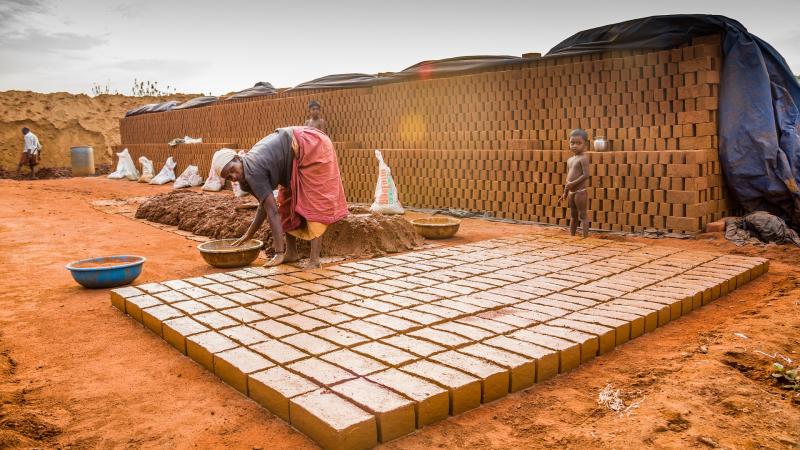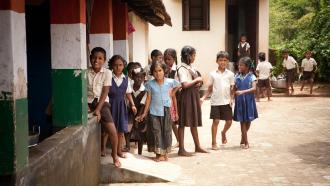
Infants require the highest level of nutrition for healthy growth and development. A four-month-old child, for example, uses 30% of its consumed food for growth. Adequate intake of minerals, like calcium and potassium, are known to be conducive to their wholesome diet. But, data from UNICEF shows that there is a high rate of undernutrition in children around the world. About 90% of the world's undernourished children live in Africa and Asia, and 20% of children below five years in India experience wasting.
The most affected kids are those of parents who cannot afford to provide a stable livelihood, like migrants. In a recent study, researchers currently based at the Indian Institute for Human Settlements, Bengaluru, assessed the overall nutritional well-being of children of migrant construction workers in Ahmedabad. The co-authored article, published in the International Journal of Equity in Health, classified the nutritional status of children under the age of 5.

Rate of malnutrition across Africa and India [Source]
According to the data from WHO, globally 155 million children under five years suffer stunting, with 41 million diagnosed as obese or overweight. But, the number remains understudied in the children of migratory workers. The informal work environment of migrants involves irregular work schedules, poor sanitation, frequent changes in where they work, wage insecurity, difficulty in commuting to public health facilities, and other conditions, leaving children with a disrupted quality of life.
The researchers of the current study gathered information on 131 children from five construction sites in Ahmedabad, Gujarat, using interviews and observing participants. They measured the height and weight of children and their mothers.
“This is not a comparative study to tell who is better or worse. This research is to report their condition,” says Dr. Divya Ravindranath, the lead author of the study.
The research found that poor dietary intake, inadequate care, and the disease-prone environment at the work site of migrant households are leading factors of undernutrition among children. One in every five children suffered wasted growth. The researchers also found that the BMI, age and education level of the mothers correlate with the overall nutrition and dietary outcomes of the children. There was a positive correlation between the mother's BMI and the child being stunted and underweight. Moreover, 70% of the mothers migrated seasonally to earn a living and this eventually affected the children’s health patterns.
When the researcher interviewed the nurses in daycare centres at the construction site, she found that several parents were unaware that their children were malnourished. The breastfeeding mothers reported many barriers at their worksites to feed their kids, including the lack of regular breaks. A very small number of construction sites had daycare facilities. On one such site, a daycare staff member said that first-time mothers often felt they had insufficient milk to breastfeed their child. One doctor also mentioned that it was a common practice for mothers to provide diluted milk or honey to soothe crying infants, especially in summer. Although at the daycare facilities, many children were given proper food and clean water, they turned malnourished again when the parents moved to another construction site.
The study also analysed the diversity of food consumed by households. No parent reported consuming fruits, eggs, or leafy green vegetables. preferred. Their diet usually consisted of a combination of either lentils, rice or corn/wheat flour roti with vegetable curry using onions, eggplants and tomatoes. These dishes were affordable and easy to cook and clean.
“The children also don't have access to clean drinking water,” adds Dr. Ravindranath.
Since the construction sites were built on undulated lands or next to dump yards with scrap materials, the sites had poor hygiene and lacked proper sanitation. The children did not use public toilets, due to issues of overcrowding and unclean surroundings, and open defecation among children was prevalent. Access to healthcare was another challenge to the migrant construction workers since the government-run hospitals were not close to their vicinity. The cost of vaccination for the kids also added to the burden of infections and diseases in the children.
In 2018, a policy called Poshan Abhiyan (Nutrition Mission) was launched to manage the crisis of poor nutritional patterns in children in India. Besides, existing interventions like the Integrated Child Development Services (ICDS) aim to solve the problem of malnutrition. However, these schemes do not reach out to cover migrant children, adding to a dearth of an appropriate system for early childhood education initiatives.
“It is paramount that government programs such as these either expand their services or create special provisions to reach migrant communities, who are among the most vulnerable in the country”, says the researcher.
The findings of the current study could help in creating a separate policy or program, initiated towards the nutrition and well-being of children from migrant communities.
This article has been run past the researchers, whose work is covered, to ensure accuracy.






